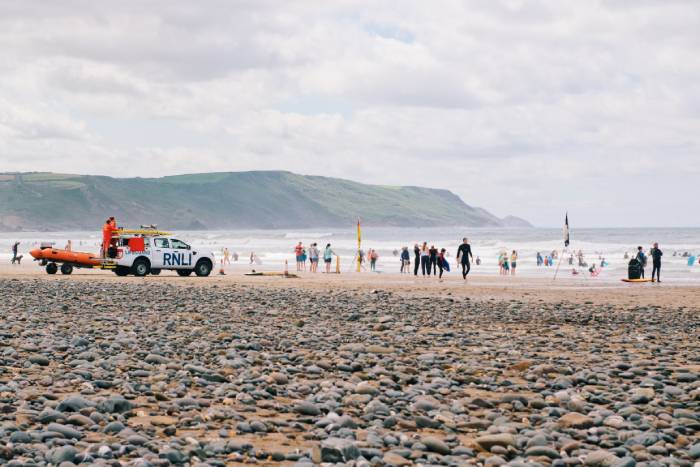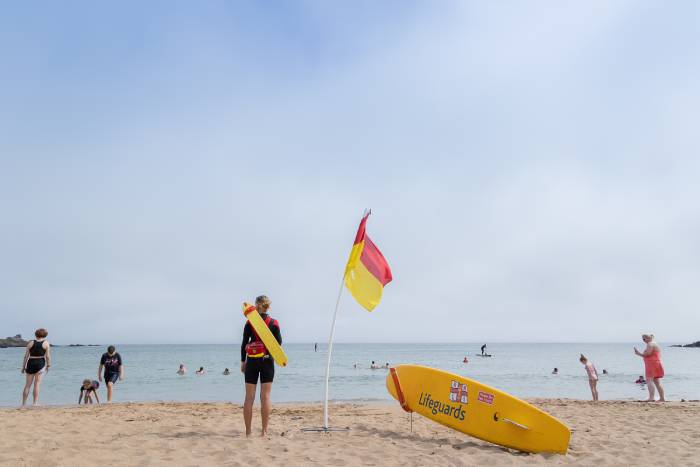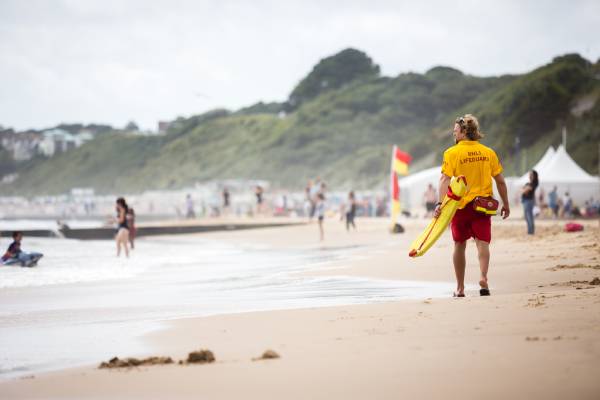
Be Beach Safe This Summer
How to Plan Your Own Swimming Expedition
by The Royal National Lifeboat Institution (RNLI)
The coast is an exciting place to be, especially in the summer – but it’s easier than you think to get into trouble in the water. Stay safe this summer with the RNLI’s essential safety advice.


Whether you're going to the beach, exploring the coast, or venturing out onto the water, we have the sea safety advice to help you stay safe.
Around 200 people lose their lives at the UK and Irish coasts each year, and over half never even planned to enter the water. It's important you know what to do in an emergency so you can help without putting yourself in danger.
So ask yourself - if you got into trouble in the water, what would you do? What about if it was someone you care about in danger?
All you need to know is two simple skills:
-
- If you find yourself in difficulty in the water, float to live to increase your chances of survival.
- If you see someone else in trouble in the water, call 999 or 112 and ask for the coastguard.


Let us elaborate…
1. Float to Live
Float to live is a lifesaving skill that you should adapt if you find yourself in difficulty in the water – it can in fact save your life. Float to live by following these five simple steps:
- Fight your instinct to thrash around.
- Lean back, extend your arms and legs.
- If you need to, gently move them around to help you float.
- Float until you can control your breathing.
- Only then, call for help, swim to safety or continue floating until help arrives.
2. Call 999 in an emergency
When you go to the beach, always carry a means of calling for help. If you’re going in the water, you can carry your mobile phone in a waterproof pouch. That way, if you find yourself or spot someone else in an emergency situation, you can get help.
In a coastal emergency, call 999 (UK) or 112 (Ireland) and ask for the coastguard.
In addition, there are many ways you can stay safe when you are out and about around the coast. We urge the public to


3. Visit a lifeguarded beach
In 2021, RNLI lifeguards aided over 40,000 people on the beach. Choosing to visit a lifeguarded beach gives you and your family the protection of highly trained lifeguards. They can see the dangers develop, prevent accidents before they happen and respond instantly if anyone gets into difficulty.
RNLI lifeguards patrol more than 240 lifeguarded beaches across the UK and Channel Islands. Find a lifeguarded beach near you or your holiday destination: https://rnli.org/find-my-nearest/lifeguarded-beaches
4. Know your flags
If you visit a lifeguarded beach, there will be flags on the beach to show you where it’s safe to swim. If you’re planning to enter the water, swim or bodyboard, stay between the red and yellow flags.
For surfboards, stand-up paddleboards or other non-powered craft, go between the black and white chequered flag. You should not swim there.
If a red flag is flying, the water is dangerous. Do not enter the water under any circumstances.


And finally…
5. Know the risks
From rip currents to tides, cold water shock to waves, being aware of the dangers will help you to stay safe – and we’ve got you covered.
Cold water shock is the effect on the body of entering water 15°C and below, and it is often underestimated. This shock can be the precursor to drowning.
If you’re planning on enjoying the water, minimise the risk by:
- Check conditions - including water temperature - before heading to the coast.
- Wear a wetsuit of appropriate thickness for the amount of time you plan to spend in the water and the type of activity you're doing, if entering.
- Wear a flotation device. It greatly increases your chances of making it through the initial shock.
Tides:
Swimming and other watersports aren't the only ways that people get into trouble at the beach. Getting cut off by the tide also contributes to a significant number of RNLI rescues every year.
Because tide times and heights vary throughout the month, a beach that was clear yesterday at 5pm might be completely covered in sea at the same time today.
You can find out more information about tides in your area through tide tables, apps, weather news or local websites.
Find tide tables and surf reports for the UK and Ireland at metoffice.gov.uk


For more safety advice, visit our website RNLI.org












